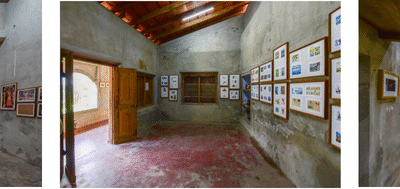News
RERA Reshapes Housing Market, Instils Higher Investor Confidence: Knight Frank India

New Delhi, August 29, 2025: Knight Frank India, a leading real estate consultancy, together with NAREDCO, has launched its new report ‘RERA’s Reign-Charting Real Estate Growth Post-2016’, which examines the Act’s transformative role in the housing market.
The report highlights how the Real Estate (Regulation and Development) Act, 2016 (RERA) has transformed the housing market by instilling transparency, discipline and long-term confidence. It showcases that RERA has successfully moderated runaway housing prices while restoring consumer trust and attracting institutional capital to the sector.

According to the report, with the implementation of RERA, speculative pricing in the housing market was brought under effective checks and balances. This policy intervention played
a central role in aligning price growth with market fundamentals. Over time, with due processes in place and business restructuring on the supply side, the residential property market registered the much awaited growth post the last down cycle.

Shishir Baijal, CMD, Knight Frank India, said, “RERA has been one of the most impactful reforms for the housing market in recent times, making the sector more transparent and instilling accountability.”
Transparency and delivery discipline have given consumers the confidence to return to the market while institutional investors are once again viewing residential real estate as a credible long-term investment story. “This renewed balance in India’s housing market will go a long way in achieving sustainable growth.”

G Hari Babu, President, NAREDCO, said, “Over the past eight years, RERA has been nothing short of a game-changer for real estate. As highlighted in the Knight Frank report at the 17th NAREDCO National Convention, housing sales in India touched an all-time high of INR 3.1 lakh crore in 2024, and nearly 1.5 lakh projects and 1.5 lakh consumer complaints have already been addressed under the RERA framework.”
This journey from opacity to transparency has rebuilt the trust of homebuyers, lenders and global investors alike. “The next step must be to evolve RERA into a more uniform, technology-driven framework across states so that the sector continues to be a backbone of India’s economic rise.”
The implementation of RERA has helped shift the housing sector away from speculative cycles, forcing developers to adopt compliance, transparency and delivery-focused practices. For consumers, the result has been fairer pricing and renewed confidence in housing as a stable asset class.
Investor Confidence Peaks
Alongside improved affordability, investor confidence in real estate has climbed steadily in the post-RERA era. The report highlights that cumulative private equity inflow surged to $26 billion between 2017–2020 compared to just $17.5 billion during 2011–2016. This influx of institutional capital reflects greater trust in the sector’s regulatory environment, signalling the success of RERA in building a more credible investment landscape.
The performance of the NIFTY Realty Index further demonstrates this trend, showing stability and resilience in the post-RERA years. Large investors, once wary of opacity and delayed delivery, now view Indian real estate as a more predictable and disciplined market.
According to the report, this structural shift has positioned the housing market as a long-term investment destination for both domestic and global players.
RERA’s National Footprint
Beyond prices and investments, RERA’s scale of implementation underlines its importance as the backbone of the housing market. By mid-2025, nearly 1.5 lakh projects and 1 lakh agents had been registered under the Act while 1.5 lakh consumer complaints were successfully resolved.
This regulatory reach demonstrates not only the seriousness of RERA’s enforcement but also its growing acceptance among homebuyers and developers alike. For the first time, homebuyers have had recourse to a structured grievance redressal mechanism, and developers have had to align their practices with strict compliance standards.
The result has been a more transparent housing market where accountability, timely delivery and financial discipline are no longer exceptions but expectations.

Saurabh Mehrotra, Executive Director, Valuation and Advisory, Knight Frank India, said, “For investors, this regulatory environment has helped create transparency and credibility in the residential sector as reflected in the $26 bn private equity inflows since 2017. Since its inception, RERA has resolved 1.5 lakh consumer complaints while regulating projects and agents at scale. It has firmly established itself as the backbone of India’s residential real estate sector.”
While RERA has laid a strong foundation, the report notes that more work remains to be done. Strengthening enforcement across states, harmonising compliance frameworks, and adopting a “One Nation, One RERA” model will be critical to further enhance transparency and efficiency.
The report also recommends leveraging technology to streamline approvals and grievance redressal alongside continued alignment with global best practices in real estate regulation. With the housing demand projected to rise steadily in the coming decade, sustaining confidence through consistent policy enforcement will be key.
The data and insights confirm that the Act has been a game changer for housing. It has moderated prices, boosted investor confidence and empowered consumers at an unprecedented scale. As RERA evolves into its next phase, it is poised to remain the cornerstone of the real estate growth story.

 News2 weeks ago
News2 weeks agoInfrastructure Automation Company Enlite Launches World’s First Patented Edge Controller for Intelligent Infrastructure

 News1 day ago
News1 day agoTWH Hospitality Announces Aggressive F&B Expansion Plan with ₹30 Cr Investment

 News2 weeks ago
News2 weeks agoIshara Art Foundation to Present Group Exhibition ‘Amphibian Aesthetics’ at Ishara House in Kochi

 News2 weeks ago
News2 weeks agoGodrej Properties Crosses FY26 Annual Business Development Guidance with Acquisition of 75-acre land parcel in Nagpur

 News3 weeks ago
News3 weeks agoMumbai Returns to Pre-Pandemic Investment Levels, Surpasses $1 Billion 4th Consecutive Year: Cushman & Wakefield

 News3 weeks ago
News3 weeks agoGurugram Premium Segment Drives Projected Rs 6.65 Lakh Crore Market: ANAROCK

 News2 weeks ago
News2 weeks agoReal Estate Investment Momentum in APAC, India to Hold Steady Through 2026: Colliers’ Survey Insights

 News2 weeks ago
News2 weeks agoK2 Infragen Delivers Robust H1 with 76.5% Revenue Growth, 70% Profit Jump



























